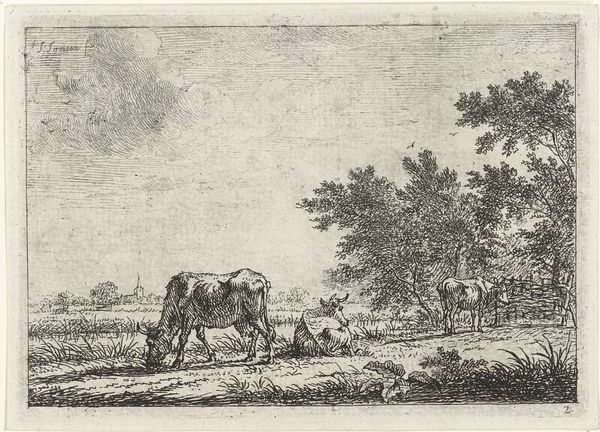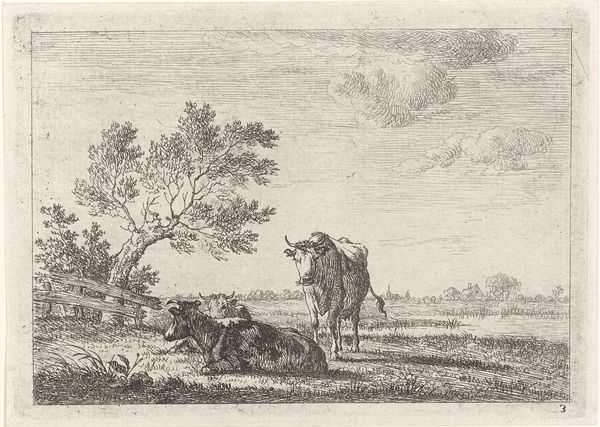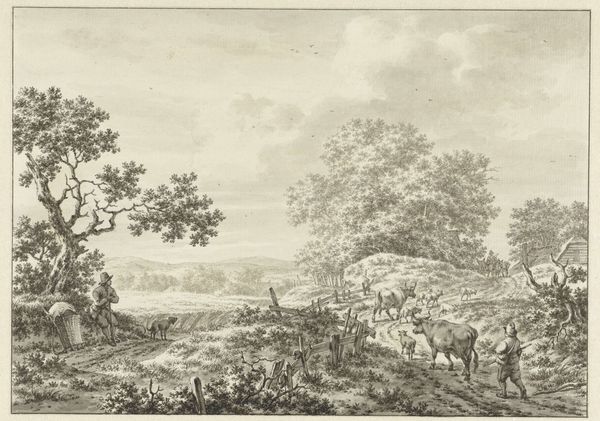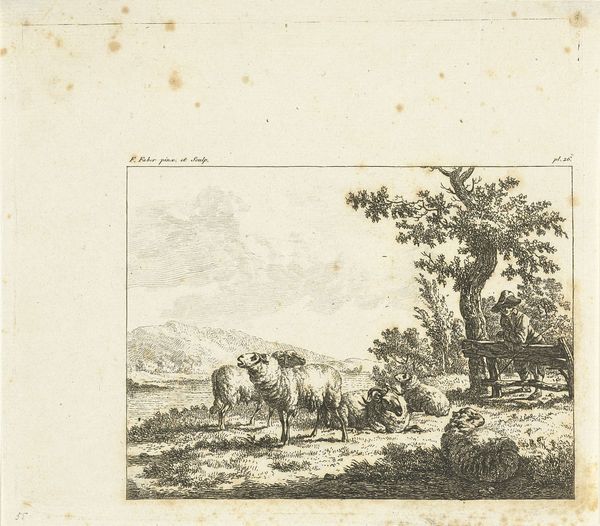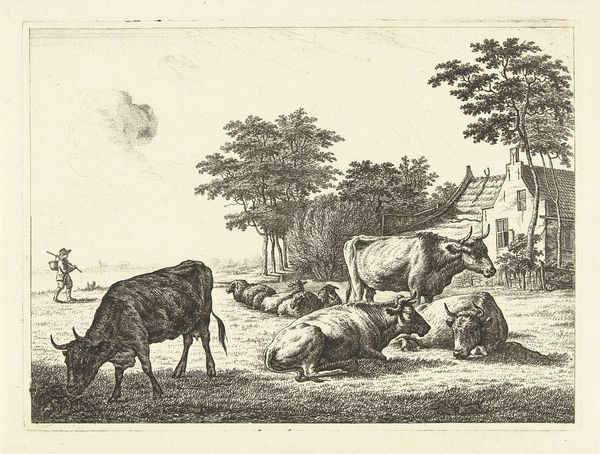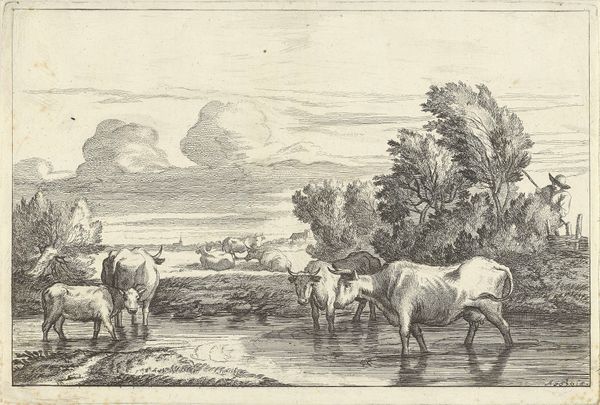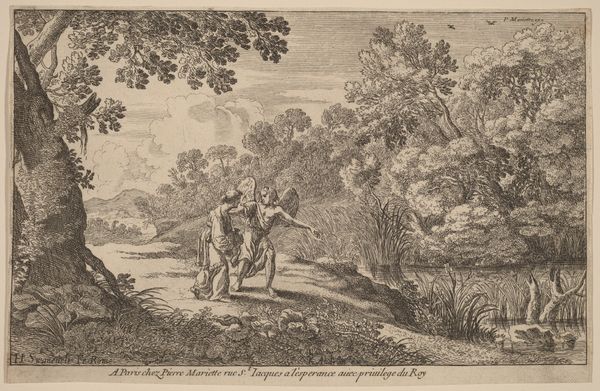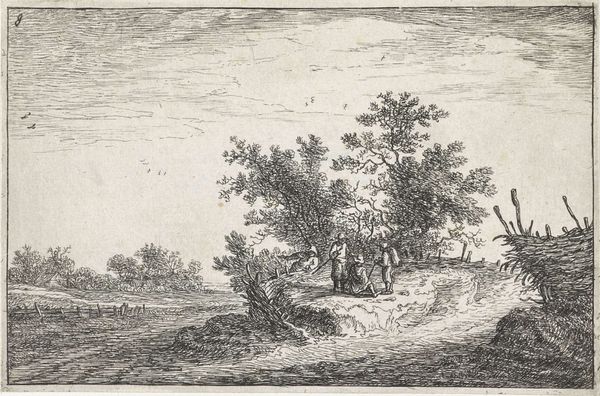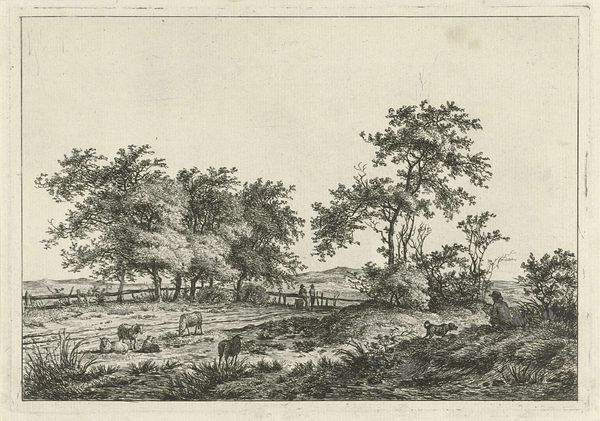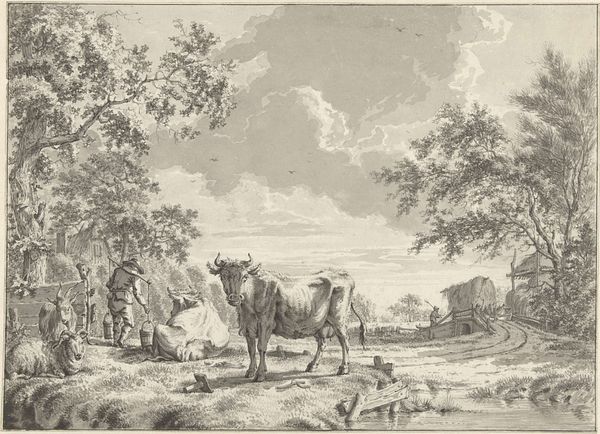
drawing, etching
#
drawing
#
etching
#
landscape
#
genre-painting
#
realism
Dimensions: height 136 mm, width 172 mm
Copyright: Rijks Museum: Open Domain
Curator: Good morning, I’d like to draw your attention to an etching dating back to 1806. It's called "Landgoed met schapen en een geit" - "Estate with sheep and a goat" - by Frédéric Théodore Faber. Editor: Immediately, I'm struck by the scene's tranquil pastoral quality, almost like a utopian vision of rural life, with these plump animals lounging in this picturesque setting. Curator: It's very much in keeping with the idealized depictions of the countryside popular at the time. Faber, though a master of topography and portraiture, very successfully engaged with popular tastes. You can almost trace how 18th-century society romanticized nature, reflecting, in part, a disconnect from the realities of rural labour. Editor: That’s a valid point. But while there is a feeling of idealized calm, there are subtle tensions if you look closer. Like that massive tree to the right, sort of looming menacingly, next to a set of sheep taking shelter from the heat, with that rather dominant goat. How do those compositional elements speak to a power dynamic and economic inequality in this image? Curator: Interesting take! It reflects a tension between controlled and untamed landscapes. In the distance, you notice the architectural structure or manor, signifying human dominance, juxtaposed with the organic shapes of nature. I believe Faber explores those boundaries by carefully balancing nature with the cultivated environment of the wealthy estate. Editor: But I do wonder about the symbolic weight we can assign to these animals as representative of class, especially in relationship with each other. What can we say about the ethics of the leisure class when viewed through the realities of land ownership in the Netherlands during that era? How might this imagery obscure the experience of those in agriculture from that time period? Curator: Certainly, an etching like this has social, economic, and political dimensions. The depiction and circulation of similar pieces played a role in shaping contemporary ideas and perspectives. Editor: It really makes you think, doesn’t it, about how representations of even seemingly benign landscapes can uphold certain values while obscuring others. Curator: Absolutely. It provides an excellent lens to examine social relations, aesthetics, and the shaping of an elite vision of nature in 19th-century Holland.
Comments
No comments
Be the first to comment and join the conversation on the ultimate creative platform.

